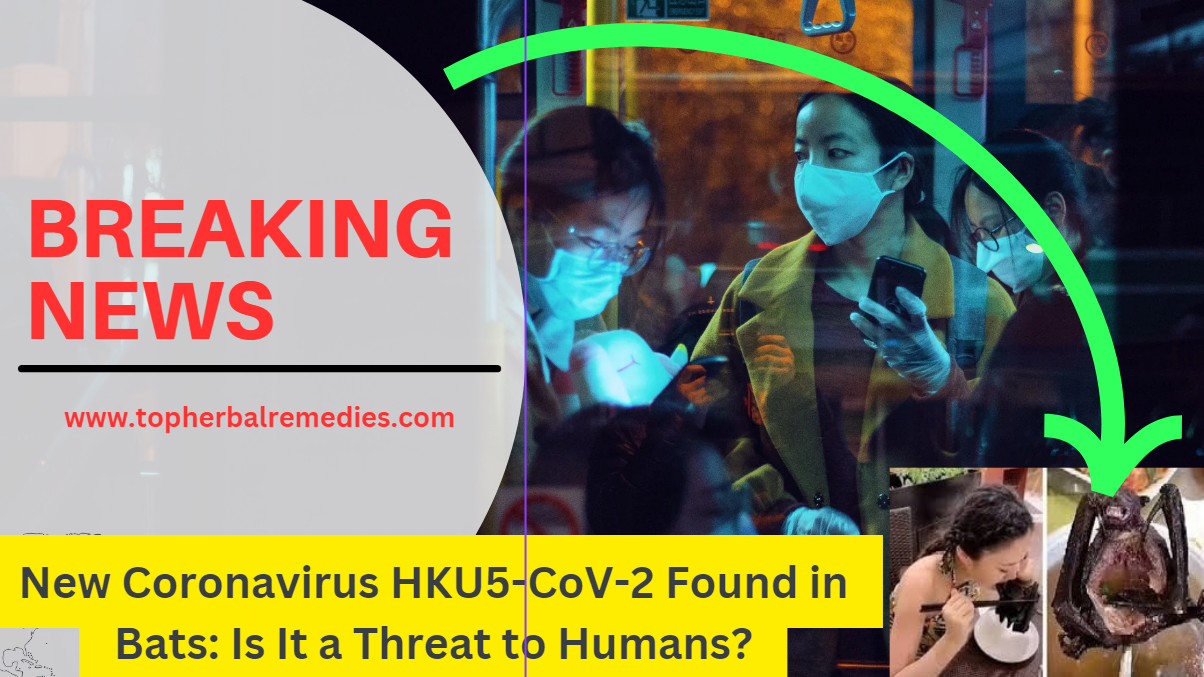In the wake of the COVID-19 pandemic, the discovery of new viruses, especially those related to coronaviruses, has understandably sparked concern and curiosity. Recently, scientists identified a novel coronavirus in bats, named HKU5-CoV-2. This virus belongs to the same family as SARS-CoV-2 (the virus behind COVID-19) and MERS-CoV (responsible for Middle East Respiratory Syndrome). While this discovery is significant for the scientific community, it raises an important question: Could this new virus pose a threat to humans? In this article, we’ll explore what we know so far, the potential risks, and how we can stay informed and prepared.
What is HKU5-CoV-2?
HKU5-CoV-2 is a bat-borne coronavirus recently identified by researchers. Like other coronaviruses, it has a crown-like appearance under a microscope, which is where the name “corona” (Latin for “crown”) comes from. This virus is part of the betacoronavirus family, which includes well-known pathogens like SARS-CoV-2 and MERS-CoV.
Key Characteristics of HKU5-CoV-2:
- Host Species: Bats are the primary carriers.
- Discovery Location: First identified in China by a team of virologists.
- Genetic Similarity: Shares genetic traits with other coronaviruses that have jumped to humans.
While HKU5-CoV-2 has not yet been shown to infect humans, its genetic makeup suggests it has the potential to do so. This makes it a subject of intense scientific scrutiny.
Who Discovered HKU5-CoV-2?
The discovery of HKU5-CoV-2 was led by Dr. Shi Zhengli, a renowned virologist often referred to as “Batwoman” for her extensive research on bat-borne viruses. Dr. Zhengli and her team at the Wuhan Institute of Virology, in collaboration with other scientific institutions, published their findings in the prestigious journal Cell. Their work focuses on understanding how viruses evolve in bats and the potential risks they pose to humans.
Is HKU5-CoV-2 Dangerous to Humans?
The million-dollar question is whether HKU5-CoV-2 can infect humans and cause disease. Here’s what we know so far:
1. Binding to Human Cells
- HKU5-CoV-2 has shown the ability to bind to the ACE2 receptor, a protein found on the surface of human cells. This is the same receptor that SARS-CoV-2 uses to enter and infect human cells.
- However, binding to the receptor doesn’t necessarily mean the virus can cause infection. Further research is needed to determine if it can replicate and spread within humans.
2. No Human Cases Reported
- As of now, there are no reported cases of HKU5-CoV-2 infecting humans. The virus has only been detected in bats.
3. Potential for Mutation
- Viruses, especially RNA viruses like coronaviruses, are prone to mutations. If HKU5-CoV-2 mutates, it could potentially gain the ability to infect humans more efficiently.
How Do Coronaviruses Jump from Bats to Humans?
Understanding how viruses like HKU5-CoV-2 could potentially spread to humans is crucial. Here are the primary pathways:
- Direct Contact: Handling or coming into close contact with infected bats or their droppings.
- Intermediate Hosts: The virus may first infect another animal (e.g., pangolins, civets) before jumping to humans.
- Food Consumption: Eating undercooked or raw meat from infected animals.
- Airborne Transmission: In some cases, viruses can spread through the air, especially in confined spaces like caves where bats reside.
Should We Be Worried?
At this stage, there’s no need for panic. HKU5-CoV-2 has not been shown to infect humans, and no outbreaks have been linked to it. However, the discovery serves as a reminder of the importance of vigilance and preparedness. Here’s why:
- Bats as Viral Reservoirs: Bats are known to carry a wide range of viruses, many of which have the potential to jump to humans.
- Lessons from COVID-19: The COVID-19 pandemic highlighted the need for early detection and monitoring of emerging viruses.
How Can We Stay Safe?
While HKU5-CoV-2 isn’t currently a threat, it’s always wise to take precautions to minimize the risk of zoonotic diseases (diseases that jump from animals to humans). Here are some practical steps:
- Practice Good Hygiene:
- Wash your hands thoroughly with soap and water, especially after handling animals or visiting areas with wildlife.
- Avoid Contact with Wild Animals:
- Refrain from touching or handling bats or other wild animals.
- Cook Meat Thoroughly:
- Ensure that meat, especially game meat, is cooked to safe temperatures to kill any potential pathogens.
- Stay Informed:
- Follow updates from reputable health organizations like the CDC and WHO.
Scientists’ Warning: The Bigger Picture
Dr. Shi Zhengli and other experts emphasize the importance of proactive research and monitoring. Bats and other wildlife are natural reservoirs for viruses, and as human activities encroach on their habitats, the risk of spillover events increases. By studying these viruses now, scientists can better prepare for potential future threats.
FAQ Section
1. Can HKU5-CoV-2 infect humans?
As of now, there is no evidence that HKU5-CoV-2 can infect humans. However, its ability to bind to human cells warrants further research
2. Should I avoid bats?
Yes, it’s best to avoid contact with bats and other wild animals to reduce the risk of exposure to viruses.
3. Is there a vaccine for HKU5-CoV-2?
No vaccine exists for HKU5-CoV-2, as it has not been shown to infect humans. Research is ongoing to understand the virus better.
4. How can I stay updated on this virus?
Follow updates from trusted sources like the CDC, WHO, and reputable scientific journals
5. What’s the difference between HKU5-CoV-2 and SARS-CoV-2?
Both are coronaviruses, but SARS-CoV-2 is the virus responsible for COVID-19. HKU5-CoV-2 is a newly discovered virus that has not been linked to human infections.
Conclusion
The discovery of HKU5-CoV-2 is a reminder of the complex relationship between humans, animals, and viruses. While there’s no immediate cause for concern, this finding underscores the importance of ongoing research, vigilance, and global cooperation in monitoring emerging pathogens. By staying informed and taking simple precautions, we can help prevent future outbreaks and protect public health.
What are your thoughts on this discovery? Share your questions or comments below, and don’t forget to follow our blog for more updates on science and health!

